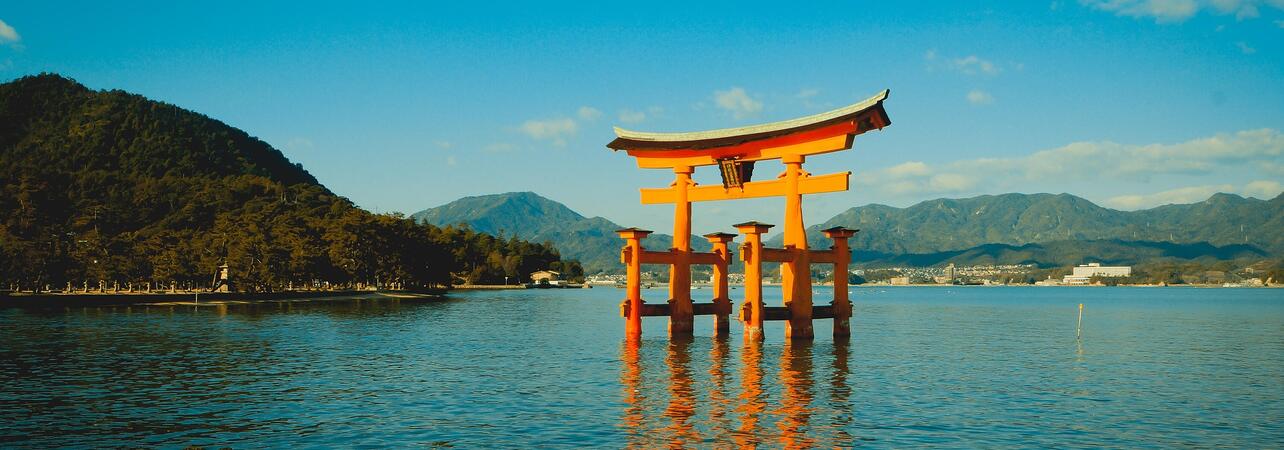In addition to this sampling, you can also view a YouTube playlist of Shinto and Ecology videos here on the Forum YouTube channel.
Multimedia
Rev. Munemichi Kurozumi, chief patriarch of the Kurozumikyo tradition, speaks about the importance of the sun, the Shinto Sun Goddess Amaterasu Omikami, and nippai, the morning mountaintop service to greet the sun. This is an excerpt from “Kurozumikyo and the Ecological Dimensions of Shinto,” one of the interviews in the Yale/Coursera course East Asian Religions and Ecology.
This week's episode of Spotlights is a clip from our interview with Dr. Mirei Takashima Claremon, a global citizen, behavioral scientist, and cross-cultural consumer insights expert based in Los Angeles. In this part of the interview, she reflects on the ways that Shinto and Buddhist values and animistic sensibilities shape Japanese culture and behaviors toward the environment. For more details about her work, go to the full episode here: https://youtu.be/RhubJW3hUYE. Posted 11/08/2021.
This week, the Spotlights podcast welcomes Dr. Mirei Takashima Claremon, a global citizen, behavioral scientist, and cross-cultural consumer insights expert based in Los Angeles. She discusses her work leading the Behavioral Sustainability movement, reflecting on the limits of analytical thinking and the importance of holistic and cross-cultural perspectives. She also talks about the important role that Shintoism and Buddhism play in her thinking. You can learn more about her work here. She blogs regularly here. You can connect with her on LinkedIn. Posted 11/01/2021.
In this film, one of sixteen in the series, we learn more about the Shinto religion. With a focus on on the worship of the forces of nature, the Shinto faith encourages self-reflection on what we can do to make the world a more harmonious place for all.
One of the ecological problems today is the notion that the earth is devoid of the sacred nature. When desacralized, the earth may become a mere resource for human use. To help enact a shift from this anthropocentric view to a “mutually enhancing relationship” (Thomas Berry) between humanity and the earth, I explore how Shinto, a Japanese indigenous spirituality, can reawaken a sense of the sacred nature of the earth and ourselves so that we can become participants and contributors to the thriving earth community filled with intrinsic values. Japanese myths, as the Shinto’s guiding force and inspiration, reveal to us how the Japanese psyche seeks to create balance and harmony among the opposing elements while appreciating multiple and diverse expressions of the sacred. These myths and Shinto spirituality can remind us of the deep connection we have with all of existence, heal the wound of separation and alienation from it, and inspire us to live astonished by the awesomeness of the sacred phenomenal world. When grateful celebration of sacred existence becomes a foundation of new ecological and spiritual sensitivities, we may experience a more intimate and caring relationship with the enchanted world.
Conveys some idea of the religious feeling which infuses the Japanese contemplation of nature and the gods (or 'kami') they detect in landscapes, trees and waterfalls. Explores what prompts them to build simple Shinto or more complex, Buddhist-influenced shrines marked by a balance between natural and man-made space. Includes many views of the Japanese landscape, forests and woods, some rituals of purification, shrine carpenters, rice festivals and Shinto priests and Japanese people at their worship. The following shrines are depicted: Ise Grand Shrine, Izumo Grand Shrine, Kasuga Grand Shrine, Kitano Temmangu, Kumano Hyatama, Kumano Nachi, Munakata Shrine, Nishna Shinmei and Omiwa Shrine.

